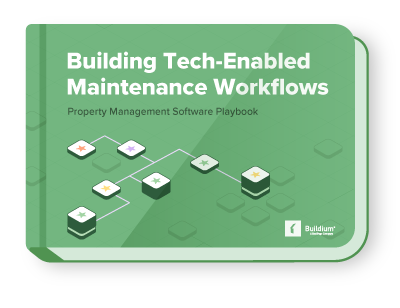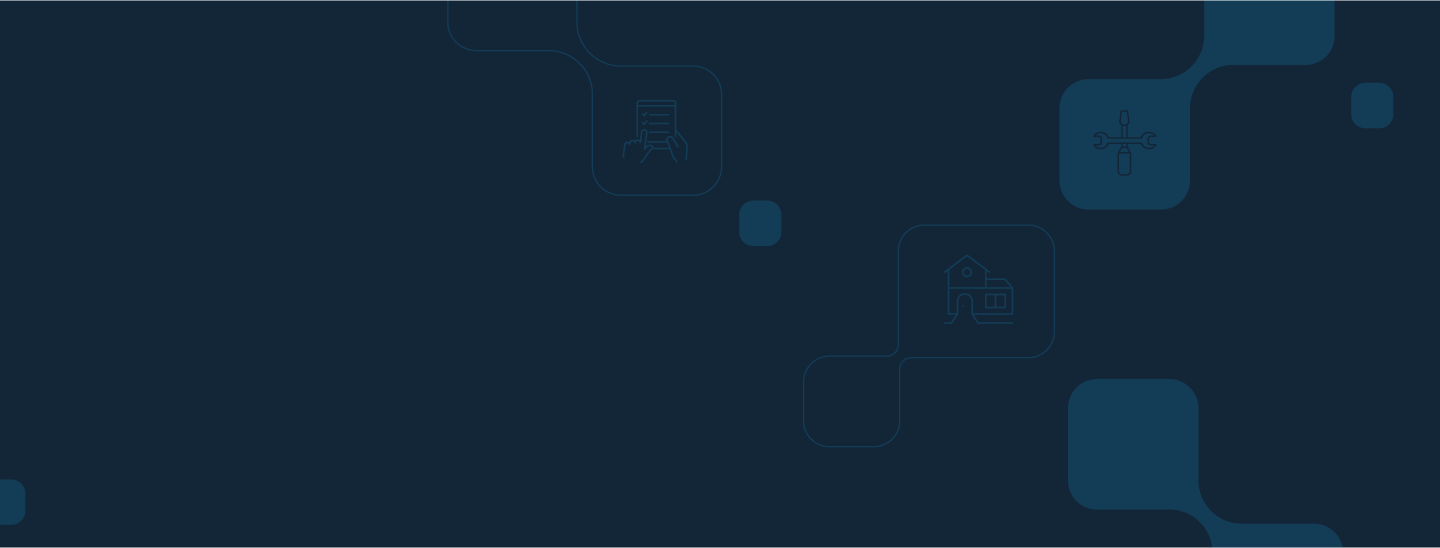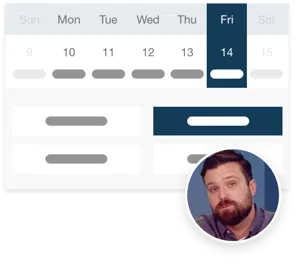Managing maintenance across multiple properties is no small feat. It takes organization, planning, and the right systems to keep everything running well. To set up a well-oiled machine that keeps the quality of repair work consistent, you’ll need a plan for preventive maintenance, a system for handling requests efficiently, and clear protocols for emergencies.
Whether you’re new to property management or looking to up your maintenance game, this post will walk you through all the essentials and point you to specific tools and other resources to make maintaining your rental properties easier.
Why Maintenance Services Matter
Keeping up with property maintenance is a big part of managing rentals. Regular upkeep makes properties safe, functional, and appealing, which helps attract and retain tenants. Plus, staying on top of maintenance can save you money on major repairs down the line and protect your property’s value.
Keeping Tenants Happy
Good maintenance services play a significant role in tenant satisfaction. When you handle maintenance issues quickly and effectively, tenants are more likely to renew their leases and recommend your property to others. This creates a positive feedback loop that boosts your reputation and keeps occupancy rates high. For example, fixing a leaky faucet or a broken HVAC system right away shows tenants that you care about their comfort. This proactive approach not only solves problems quickly but also builds trust and reliability.
Protecting Property Value
Regular maintenance is a lot of what goes into preserving a property’s value. By doing routine inspections and fixing small problems before they become big issues, you can prevent major damage and costly repairs. This foresight is what keeps the properties you manage in top shape, preserving their value for your clients.
Consider setting up a preventive maintenance plan that includes regular checks on important systems such as plumbing, electrical, and HVAC. Keeping these systems in good working order prevents breakdowns and extends their lifespan, leading to long-term savings.
Effective Property Management Maintenance Strategies
Managing maintenance effectively requires a clear plan, good communication, and the right tools. Here are some strategies to help you improve your maintenance services:
Creating a Maintenance Plan
A solid maintenance plan is the foundation of good property management. This plan should outline what maintenance tasks need to be done, how often, and who is responsible. Having a structured plan helps you to complete maintenance projects consistently and on schedule.
Start by categorizing tasks into routine, preventive, and emergency. Routine maintenance includes regular tasks such as cleaning common areas, landscaping, and pest control. Preventive maintenance involves scheduled inspections and servicing of key systems, while emergency maintenance deals with urgent issues that need immediate attention.
Read More: Guide To Property Maintenance Project Management
Using Maintenance Software
Technology can make a big difference in how you manage maintenance. Maintenance software offers a central place to track requests, schedule tasks, and monitor progress. This approach improves the quality and consistency of your communication, reduces errors, and makes all of your maintenance projects run smoothly.
For example, software such as Buildium lets you automate work orders, track maintenance history, and communicate with tenants and vendors easily. It creates a central record that keeps all your maintenance activities well-documented and easy to access.
Setting Up Clear Communication Channels
Good communication is necessary for successful maintenance management. Setting up reliable communication channels between tenants, property managers, and maintenance staff ensures that issues are reported quickly and handled efficiently.
Implement a resident portal where tenants can submit maintenance requests, track progress, and get updates. This transparency not only improves tenant satisfaction but also helps you prioritize and allocate resources more effectively.
Building a Reliable Vendor Network
Having a network of trustworthy vendors and contractors is necessary for efficient maintenance services. Building strong relationships with reliable professionals you can count on to deliver quality service quickly and whenever needed.
To do this, vet vendors thoroughly and set clear agreements outlining service expectations, response times, and pricing. By maintaining a list of preferred vendors, you can simplify the process of sourcing and coordinating maintenance tasks, reducing downtime and keeping the quality of your services consistent.
Implementing Preventive Maintenance
Preventive maintenance focuses on regular inspections and servicing to prevent potential problems. Putting a preventive maintenance program in place can save you time, cut costs, and extend the life of your property assets.
Creating a Preventive Maintenance Schedule
Develop a schedule that outlines how often and what needs to be inspected and serviced. This schedule should cover important areas such as HVAC, plumbing, electrical, roofing, and common areas. Sticking to a preventive maintenance schedule helps you spot and fix issues early, preventing them from becoming major problems. Regular maintenance also keeps systems running efficiently, reducing energy use and operational costs.
Read More: A Must-Have Property Management Preventive Maintenance Checklist to Avoid Costly Repairs
Conducting Regular Inspections
Regular inspections are a key part of preventive maintenance. Schedule them at regular intervals to check the condition of property systems and spot any signs of wear and tear.
During inspections, pay attention to common problem areas such as roof leaks, plumbing leaks, electrical faults, and HVAC performance. Document these inspections and any corrective actions taken to create a valuable record for future reference and track your maintenance program’s effectiveness.
Read More: The Ultimate Guide to Rental Inspection Checklists
Training Maintenance Staff
Investing in training and development for your maintenance staff is necessary for effective preventive maintenance. Make sure your team is up to date on the latest techniques, safety protocols, and industry best practices.
Provide regular training sessions and access to resources that keep them informed about new technologies and methods. A well-trained team is better equipped to spot potential issues, perform repairs efficiently, and implement preventive measures effectively.
Read More: How to Set Up Property Management Maintenance Services
Handling Emergency Property Management Maintenance
Emergency maintenance situations require quick and organized responses to minimize damage and keep tenants safe. Having a clear emergency plan is important for managing these situations effectively.
Establishing an Emergency Protocol
Create an emergency maintenance protocol that details the steps to take in urgent situations such as water leaks, electrical failures, or structural damage. This protocol should include clear instructions for reporting emergencies, contacting relevant personnel, and addressing the issue promptly.
Familiarize your staff members with the protocol and have access to emergency contact information. Regularly review and update it to address any new risks or changes in property operations.
Read More: Understanding and Managing Rental Property Maintenance Emergencies
Setting Up 24/7 Availability
Offering 24/7 maintenance support is important for handling emergencies effectively. Have a clearly defined channel that tenants can use to reach your staff that handles maintenance at any time, especially during non-business hours. A dedicated maintenance contact center can meet this need with little to no extra effort on your part.
If you want to bring this responsibility in house, consider setting up an on-call system where designated staff members are available to respond to emergencies outside of regular working hours. Having someone always availability reassures tenants that their needs will be addressed quickly, boosting their confidence in your management services.
Prioritizing Safety
In emergency situations, tenant safety is the top priority. Train your maintenance team to handle emergencies safely and efficiently. Equip them with the necessary tools and protective gear to address urgent issues without compromising their safety.
For example, in the case of a gas leak, your team should know how to safely evacuate tenants, shut off the gas supply, and contact emergency services. Providing clear instructions and training on emergency protocols makes it possible for your team to respond quickly and effectively minimize risks even before they emerge.
Improving Communication and the Tenant Experience
Effective maintenance management goes beyond quickly addressing issues; it also involves improving the overall tenant experience through clear communication and proactive engagement.
Proactive Communication
Proactive communication helps manage tenant expectations and keeps them informed about maintenance activities. Regular updates on ongoing work, upcoming inspections, and scheduled repairs demonstrate transparency and build trust.
Use digital channels such as email, resident portals, and mobile apps to keep tenants in the loop. Provide clear timelines for maintenance activities and notify tenants in advance of any disruptions. This proactive approach minimizes inconvenience and fosters a positive tenant experience.
Gathering Tenant Feedback
Getting feedback from tenants is valuable for evaluating the effectiveness of your maintenance services and finding areas for improvement. Conduct regular surveys to gauge tenant satisfaction and gather insights on their maintenance experiences. You can even use tailored tools such as Opiniion to quickly and non-intrusively get feedback from renters.
Analyze the feedback to identify recurring issues, areas of concern, and opportunities for enhancement. Use this information to refine your processes, address tenant concerns, and continuously improve service quality.
Addressing Common Maintenance Issues
Being aware of common maintenance issues and addressing them proactively can greatly enhance tenant satisfaction. Regularly review maintenance records to identify recurring problems such as plumbing leaks, HVAC malfunctions, or pest infestations.
Develop a proactive approach to dealing with these common issues by implementing preventive measures, scheduling routine inspections, and addressing root causes. Staying ahead of potential problems minimizes disruptions and maintains high property upkeep standards.
When to Use Technology for Property Management Maintenance
Technology plays a big role in modernizing maintenance management and improving efficiency. Using advanced tools and software can simplify maintenance processes, improve communication, and manage resources better.
IoT in Property Maintenance Management
The Internet of Things (IoT) has changed property maintenance by enabling real-time monitoring and automation of property systems. IoT devices such as smart thermostats, sensors, and remote monitoring systems provide valuable data on the condition and performance of property assets.
For example, IoT sensors can detect water leaks, monitor HVAC performance, and track energy consumption. This data helps property managers identify potential issues early, schedule maintenance proactively, and optimize energy usage, leading to cost savings and better property performance.
Mobile Maintenance Apps
Mobile maintenance apps give maintenance staff real-time access to work orders, schedules, and property info. These apps let staff receive notifications, update task statuses, and communicate with tenants and property managers on the go.
Using mobile apps enhances the efficiency and responsiveness of maintenance teams. The ability to access info and manage tasks from mobile devices makes your workflows simpler while reducing delays and the slow back and forth that can otherwise plague maintenance requests.
Data-Driven Decision Making
Data-driven decision making is a key advantage of using technology in maintenance management. Maintenance software and IoT devices generate valuable data that can be analyzed to identify trends, assess performance, and make informed decisions.
For instance, analyzing maintenance data can reveal patterns such as frequent HVAC breakdowns or recurring plumbing issues. This information helps property managers allocate resources effectively, prioritize important tasks, and implement preventive measures to address underlying problems.
Comprehensive Property Management Software
By far, some of the most cost-effective technology you can invest in is property management software. These types of platforms often come equipped with several maintenance-focused features such as work order tracking, a maintenance contact center, resident portals, mobile apps, and a way to easily collect, sort, and analyze all your maintenance work and vendor details in one place.
Read More: Property Maintenance Management Systems
Buildium is a comprehensive platform that has all these features, plus others that span all the other parts of the job, from leasing to accounting. You can give it a spin with a free, 14-day trial.
Stepping Up Your Property Management Maintenance Game
Improving property management maintenance services involves a mix of smart planning, clear communication, and technology. By setting up a solid maintenance plan, using maintenance software, and keeping tenants happy, property managers can save money and staff time while consistently delivering top-notch service.



